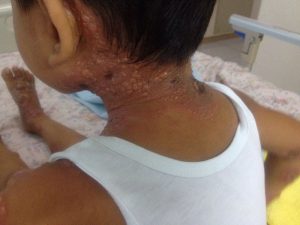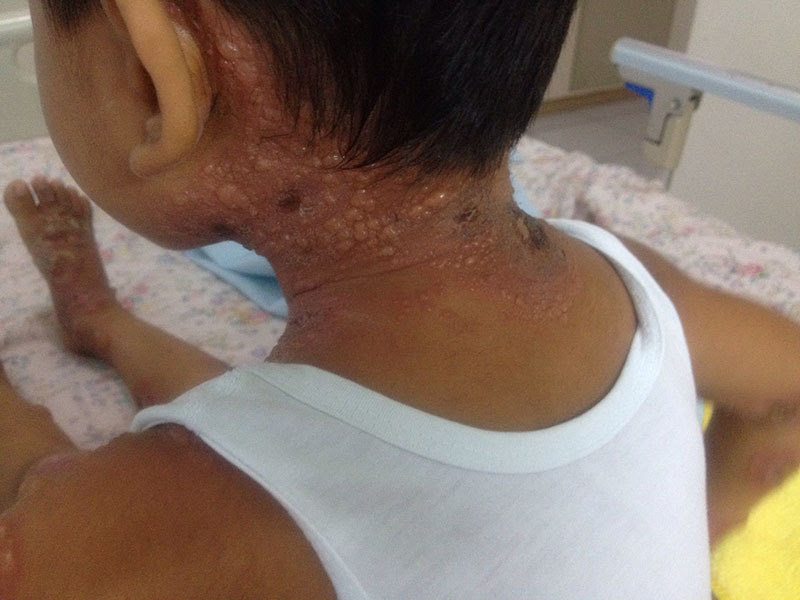Figure 1 Quiz of the Week
A 4-year-old boy with known G6PD deficiency is brought to the pediatrician by his mother with a blistering pruritic rash. On examination, numerous tense vesicles and bullae are seen on his neck, lower abdomen, and extremities. Ulcerative lesions on his buccal mucosa are also noted. Direct immunofluorescence of a skin biopsy later reveals linear deposits of immunoglobulin A (IgA) at the dermoepidermal junction.

Image credit: @naltrexone.
Answer: Sulfapyridine
This patient’s presentation is indicative of linear IgA bullous dermatosis (LABD), a rare autoimmune disease characterized by the acute onset of a blistering rash, often accompanied by mucosal lesions. Linear deposition of IgA at the dermoepidermal junction is pathognomonic of the disease. LABD can be drug-induced or occur idiopathically, and is typically treated with dapsone. However, its use is associated with an increased risk of severe hemolytic anemia in patients with G6PD deficiency, and as such, should be avoided. A second-line therapy such as sulfapyridine is recommended in these cases.
Read more and join the discussion now at Figure 1!
Explore cases, quiz yourself, and solve medical mysteries along with thousands of other medical professionals around the world on Figure 1, the free app where doctors expand their clinical knowledge.

